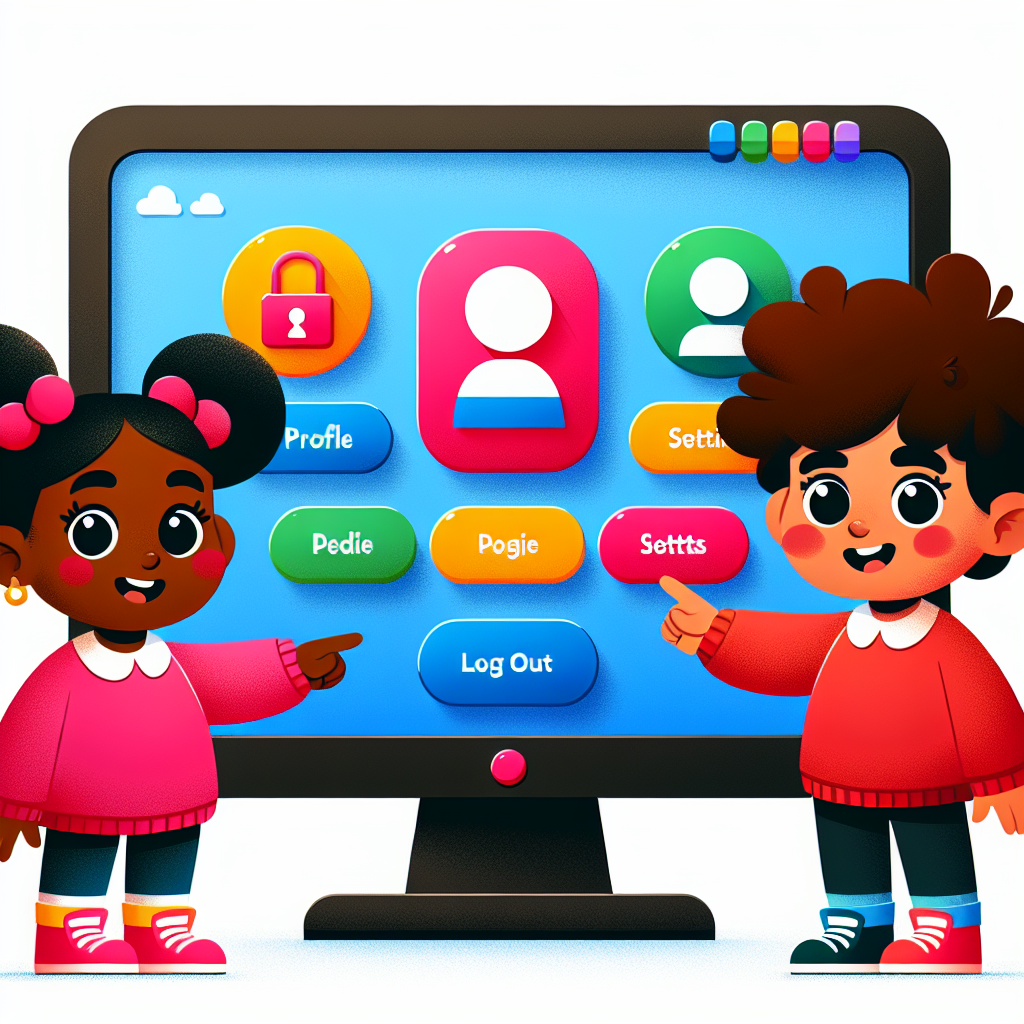User accounts are an essential aspect of modern digital life, providing personalized experiences, security, and access control across various platforms and services. Whether you’re a casual internet user or a business owner managing multiple accounts, understanding how to effectively navigate user accounts is crucial. In this comprehensive guide, we’ll explore everything you need to know about user accounts, from creation and management to security best practices and troubleshooting.
Creating User Accounts
The first step in navigating user accounts is creating them. Here’s what you need to know:
1. Choosing the Right Platform
Before creating an account, consider which platform best suits your needs. Popular options include:
• Social media platforms (e.g., Facebook, Twitter, Instagram)
• Email services (e.g., Gmail, Outlook, ProtonMail)
• Cloud storage providers (e.g., Dropbox, Google Drive, iCloud)
• E-commerce websites (e.g., Amazon, eBay, Etsy)
• Professional networking sites (e.g., LinkedIn, Glassdoor)
2. Registration Process
Most platforms follow a similar registration process:
1. Visit the website or download the app
2. Look for a “Sign Up” or “Create Account” button
3. Provide required information (e.g., name, email, password)
4. Agree to terms of service and privacy policy
5. Verify your account (usually via email or phone)
3. Choosing a Strong Username and Password
Username tips:
• Make it unique and memorable
• Avoid using personal information
• Consider using a combination of letters, numbers, and symbols
Password best practices:
• Use a combination of uppercase and lowercase letters, numbers, and symbols
• Make it at least 12 characters long
• Avoid using easily guessable information (e.g., birthdays, pet names)
• Use a unique password for each account
Pro tip: Consider using a password manager like LastPass, 1Password, or Bitwarden to generate and store strong, unique passwords for all your accounts.
Managing User Accounts
Once you’ve created your accounts, it’s important to manage them effectively:
1. Account Settings and Preferences
Familiarize yourself with the account settings for each platform. Common settings include:
• Privacy controls
• Notification preferences
• Language and regional settings
• Connected apps and devices
• Two-factor authentication
2. Profile Information
Keep your profile information up-to-date and consistent across platforms:
• Profile picture
• Bio or “About Me” section
• Contact information
• Work history and education (for professional networks)
3. Account Recovery Options
Set up account recovery options to regain access if you forget your password or lose access to your account:
• Secondary email address
• Phone number for SMS verification
• Security questions and answers
• Backup codes (for two-factor authentication)
Security Best Practices
Protecting your user accounts is crucial in today’s digital landscape. Here are some essential security practices:
1. Enable Two-Factor Authentication (2FA)
Two-factor authentication adds an extra layer of security by requiring a second form of verification in addition to your password. Common 2FA methods include:
• SMS codes
• Authenticator apps (e.g., Google Authenticator, Authy)
• Hardware security keys (e.g., YubiKey)
2. Regular Password Updates
Change your passwords periodically, especially for sensitive accounts like banking or email. Aim to update passwords every 3-6 months.
3. Monitor Account Activity
Regularly check your account activity for any suspicious logins or actions. Many platforms offer activity logs or security alerts.
4. Use Secure Connections
When accessing your accounts, especially on public Wi-Fi networks:
• Use a VPN (Virtual Private Network) to encrypt your connection
• Look for HTTPS in the URL bar to ensure the website is secure
• Avoid logging into sensitive accounts on public computers
Managing Multiple Accounts
As our digital presence grows, managing multiple accounts can become challenging. Here are some strategies to help:
1. Account Aggregators
Use account aggregation tools to manage multiple accounts from a single dashboard:
• Hootsuite or Buffer for social media accounts
• Mint or Personal Capital for financial accounts
• Thunderbird or Mailbird for email accounts
2. Browser Profiles
Create separate browser profiles for different purposes:
• Personal browsing
• Work-related accounts
• Finance and banking
• Social media
3. Password Managers
In addition to generating and storing passwords, password managers can help organize and categorize your accounts.
Troubleshooting Common Account Issues
Even with careful management, you may encounter account issues. Here’s how to handle common problems:
1. Forgotten Passwords
1. Use the “Forgot Password” option on the login page
2. Follow the account recovery process (email, SMS, or security questions)
3. If unsuccessful, contact the platform’s support team
2. Locked Accounts
Accounts may be locked due to suspicious activity or multiple failed login attempts:
1. Wait for the specified time period (if applicable)
2. Verify your identity through the platform’s recovery process
3. Contact customer support if the issue persists
3. Hacked Accounts
If you suspect your account has been compromised:
1. Change your password immediately
2. Enable two-factor authentication if not already active
3. Review recent account activity and revoke access to any unfamiliar devices or apps
4. Contact the platform’s support team to report the issue
Privacy Considerations
Protecting your privacy is an essential aspect of navigating user accounts:
1. Review Privacy Settings
Regularly review and update privacy settings for each account:
• Control who can see your posts and personal information
• Manage third-party app permissions
• Opt-out of data sharing when possible
2. Data Portability and Deletion
Familiarize yourself with data portability and deletion options:
• Many platforms offer options to download your data
• Look for account deletion or deactivation options if you no longer need an account
3. Be Mindful of Sharing
Think twice before sharing personal information online:
• Avoid oversharing on social media
• Be cautious about providing sensitive information to unfamiliar websites
• Use privacy-focused alternatives when possible (e.g., DuckDuckGo instead of Google for search)
Advanced Account Management Techniques
For power users and businesses, consider these advanced techniques:
1. Single Sign-On (SSO)
Implement SSO solutions to streamline account management:
• Use one set of credentials to access multiple applications
• Popular SSO providers include Okta, OneLogin, and Azure Active Directory
2. Role-Based Access Control (RBAC)
For businesses managing multiple user accounts:
• Assign roles and permissions based on job functions
• Implement the principle of least privilege to minimize security risks
3. Account Lifecycle Management
Develop processes for managing accounts throughout their lifecycle:
• Onboarding: Creating and provisioning new accounts
• Maintenance: Regular audits and updates
• Offboarding: Securely removing access when users leave
Emerging Trends in User Account Management
Stay ahead of the curve by understanding these emerging trends:
1. Passwordless Authentication
• Biometric authentication (fingerprint, facial recognition)
• Magic links sent via email
• WebAuthn standard for web-based authentication
2. Decentralized Identity
• Blockchain-based identity systems
• Self-sovereign identity solutions
• Improved privacy and control over personal data
3. Artificial Intelligence in Account Security
• AI-powered fraud detection
• Behavioral biometrics for continuous authentication
• Predictive analysis to identify potential security threats
Tools and Resources
To help you navigate user accounts more effectively, consider these tools and resources:
1. Password Managers
• LastPass
• 1Password
• Bitwarden
• Dashlane
2. Two-Factor Authentication Apps
• Google Authenticator
• Authy
• Microsoft Authenticator
• Duo Mobile
3. VPN Services
• NordVPN
• ExpressVPN
• ProtonVPN
• Surfshark
4. Account Security Checkers
• Have I Been Pwned (check if your email has been involved in data breaches)
• Google Security Checkup
• Facebook Security Checkup
5. Educational Resources
• National Cyber Security Centre (NCSC) guidance
• SANS Security Awareness training
• Coursera and edX cybersecurity courses
Conclusion
Navigating user accounts in today’s digital landscape can be complex, but with the right knowledge and tools, you can effectively manage your online presence while maintaining security and privacy. By following best practices for account creation, management, and security, you’ll be well-equipped to handle the challenges of the digital world.
Remember to regularly review your accounts, update security settings, and stay informed about emerging trends and threats. With a proactive approach to account management, you can enjoy the benefits of online services while minimizing risks to your personal information and digital identity.
FAQs
Q1: How often should I change my passwords?
A1: It’s recommended to change passwords every 3-6 months, or immediately if you suspect a security breach.
Q2: Is it safe to use the same email address for multiple accounts?
A2: While it’s convenient, using the same email for multiple accounts can increase your risk if one account is compromised. Consider using email aliases or separate email addresses for critical accounts.
Q3: What should I do if I discover an unauthorized login to my account?
A3: Immediately change your password, enable two-factor authentication if not already active, and review recent account activity. Contact the platform’s support team to report the unauthorized access.
Q4: Are password managers safe to use?
A4: Reputable password managers use strong encryption and security practices, making them generally safe and more secure than reusing passwords across multiple accounts.
Q5: How can I securely share account access with others?
A5: Use built-in sharing features when available, or consider password managers with secure sharing capabilities. Avoid sharing passwords via email or messaging apps.
Q6: What’s the difference between deactivating and deleting an account?
A6: Deactivation typically temporarily disables an account, while deletion permanently removes the account and associated data. The specifics can vary by platform, so always check the terms of service.
Q7: How can I protect my accounts when using public Wi-Fi?
A7: Use a VPN to encrypt your connection, avoid accessing sensitive accounts on public networks, and ensure you’re connecting to legitimate Wi-Fi networks.
Q8: What should I do if I lose access to my two-factor authentication device?
A8: Use backup codes if you’ve set them up, or contact the platform’s support team to verify your identity and regain access to your account.
Q9: How can I keep track of all my online accounts?
A9: Use a password manager to store and organize your accounts, or create a secure digital or physical document listing your accounts (without including passwords).
Q10: Is it necessary to fill out all profile information when creating an account?
A10: Not always. Provide only the required information and consider the privacy implications before sharing additional details. Some platforms allow you to control who can see specific profile information.

